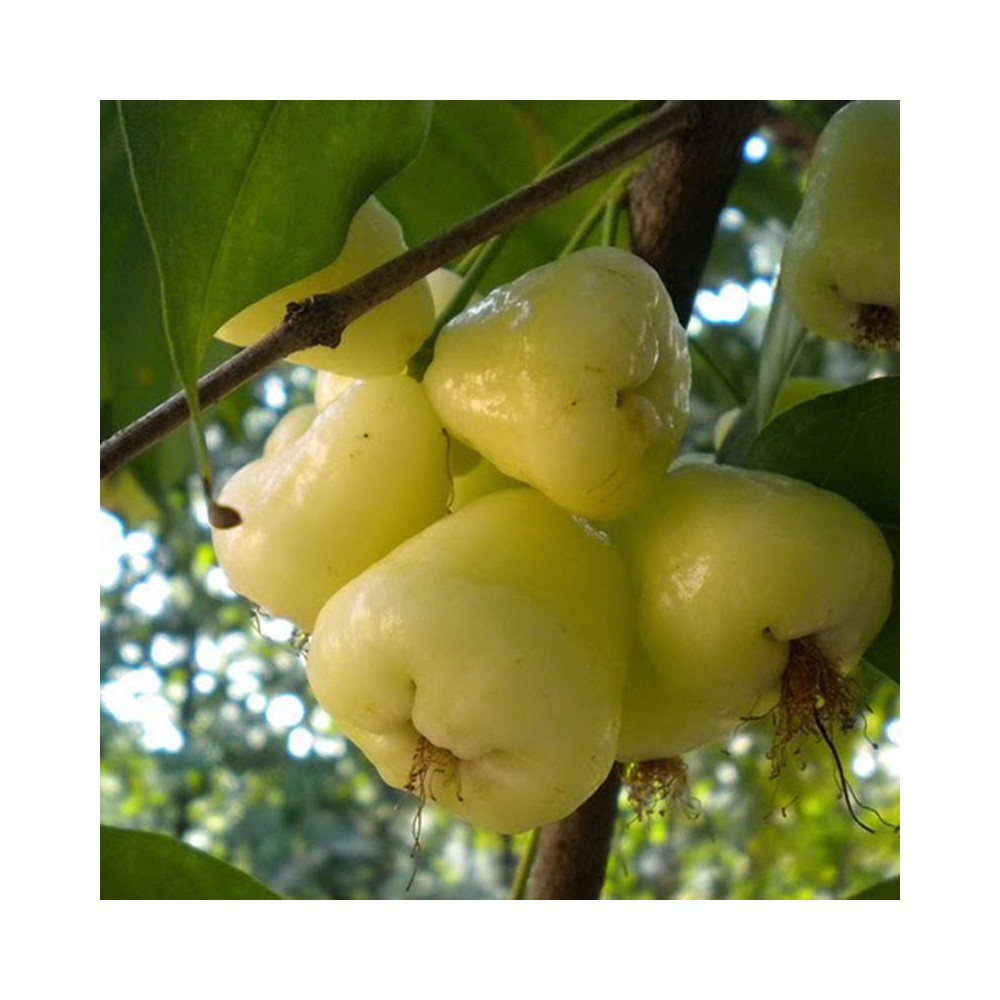



Watter Apple Ever wish you could have an apple orchard in your backyard? You can—in the space of a single tree—if you plant a hedge of dwarf apple trees or an apple espalier.

Security policy visit http://nurserynature.com/content/10-security-policy

Shipping & Delivery Policy visit http://nurserynature.com/content/1-delivery

Cancellation & Refund Policy visit http://nurserynature.com/content/6-aeu-legal-revocation-terms
Watter Apple Ever wish you could have an apple orchard in your backyard? You can—in the space of a single tree—if you plant a hedge of dwarf apple trees or an apple espalier.
Watter Apple Planting & Care
PLANTING
Spring planting is recommended in central and northern areas. Where fall and winter weather is generally mild and moist, fall planting is successful.
Climate Considerations
Not every apple grows everywhere. Each variety has a specific number of days needed for fruit maturity.
Tree tags don’t always tell you where the variety grows best, but many catalogs do. Also, check with your county extension agent for a specific recommendation for your area.
As a general rule, if a tree is termed hardy, it grows best in Zones 3 to 5. If termed long-season, apple quality will be best in Zones 5 to 8. Check your zone here.
Each variety has a number of chill hours needed to set fruit (i.e., the amount of time temperatures are between 32 and 45 degrees F). The farther north you go, the more chill hours an apple variety needs to avoid late spring freeze problems. Check tree tags for chill hour information or ask the seller.
Site and Soil
Take a soil test prior to planting your apple trees. Your local County Extension Center can instruct you in collecting the soil sample, help you interpret the results, and provide valuable information about the soil in your county. Results from the soil test will determine the soil amendments necessary to correct nutrient deficiencies and adjust soil pH. The amendments should be worked into the soil to a depth of 12 to 18 inches where the tree will root, not just the planting hole.
Apple trees need well-drained soil, not too wet. Soil needs to be moderately rich and retain moisture as well as air; mulch with straw, hay, or some other organic material to keep soil moist and provide nutrients as they decompose.
Choose a sunny site. For best fruiting, an apple tree needs “full sunlight,” which means six or more hours of direct summer sun daily. The best exposure for apples is a north- or east-facing slope.
Tree spacing is influenced by the rootstock, soil fertility, and pruning. A seedling or full-size tree should be planted about 15 to 18 feet in a row. A dwarfing rootstock might be 4 to 8 feet in a row.
Dwarf apple trees are notoriously prone to uprooting under the weight of a heavy crop, so you should provide a support system for your hedge. You can grow your trees against a fence, or you can provide free-standing support in the form of a trellis.
Make sure the tree will not be planted in a “frost pocket” where cold air settles in low-lying areas. Choose a higher site with a slip if possible so that cold air will flow away from the trees.
Do not plant trees near wooded areas or trees.
Planting the Tree in the Ground
Before planting, remove all weeds and the grass in a 4-foot diameter circle.
After you purchase the tree, protect it from injury, drying out, freezing, or overheating. If the roots have dried out, soak them in water about 24 hours before planting.
Dig a hole approximately twice the diameter of the root system and 2 feet deep. Place some of the loose soil back into the hole and loosen the soil on the walls of the planting hole so the roots can easily penetrate the soil. Spread the tree roots on the loose soil, making sure they are not twisted or crowded in the hole. Continue to replace soil around the roots. As you begin to cover the roots, firm the soil to be sure it surrounds the roots and to remove air pockets.
Do not add fertilizer at planting time as the roots can be “burned”. Fill the remainder of the hole with the loose soil, and press the soil down well.
Most apple trees are grafted. The graft union must be at least 2 inches above the soil line so that roots do not emerge from the scion. The graft union (where the scion is attached to the rootstock) can be recognized by the swelling at the junction.
CARE
Minimize Pruning of a Young Tree
Pruning slows a young tree’s overall growth and can delay fruiting, so don’t be in a hurry to prune, other than removing misplaced, broken, or dead branches. There are several techniques to direct growth without heavy pruning. For example:
Rub off misplaced buds before they grow into misplaced branches.
Bend a stem down almost horizontally for a few weeks to slow growth and promote branches and fruiting. Tie down with strings to stakes in the ground or to lower branches.
Prune a Mature Tree Annually
Once an apple tree has filled in and is bearing fruit, it requires regular, moderate pruning.
Prune your mature tree when it is dormant. Completely cut away overly vigorous, upright stems (most common high up in the tree).
Remove weak twigs (which often hang from the undersides of limbs.
Shorten stems that become too droopy, especially those low in the tree.
After about ten years, fruiting spurs (stubby branches that elongate only about a half-inch per year) become overcrowded and decrepit. Cut away some of them and shorten others.
When a whole limb of fruiting spurs declines with age, cut it back to make room for a younger replacement.